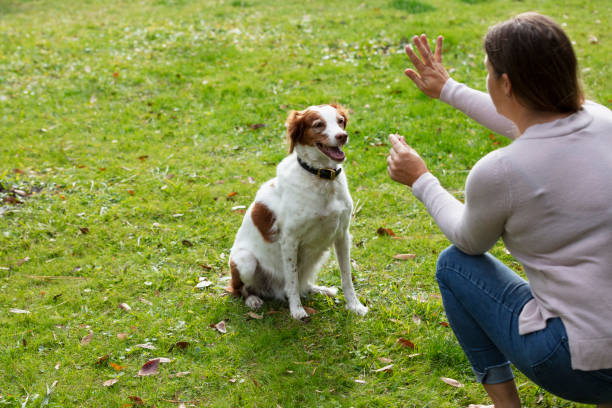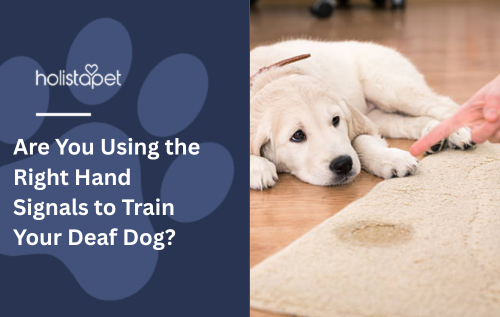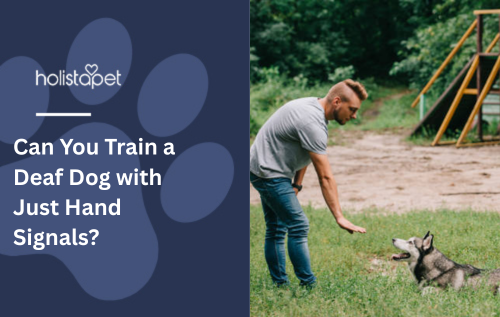Training a deaf dog might seem overwhelming at first, but with the right techniques—especially hand signals—you can build a strong, clear, and loving communication channel with your pup. Whether your dog was born deaf or lost its hearing over time, using deaf dog training hand signals is one of the most effective ways to ensure successful obedience training.
In this guide, we’ll explore the best hand signals, how to teach them, and why consistency and patience are key.
 Why Hand Signals Are Crucial for Deaf Dog Training
Why Hand Signals Are Crucial for Deaf Dog Training
Dogs naturally rely on body language to communicate, which makes hand signals a perfect fit for training deaf dogs. Instead of verbal commands, dogs learn to associate visual cues with behaviors, ensuring they understand your instructions even without sound.
Using deaf dog training hand signals offers benefits such as:
-
Clear communication
-
Reduced confusion or stress
-
Strengthened trust between you and your dog
Common Hand Signals to Teach a Deaf Dog
Here are some effective hand signals widely used by trainers:
| Command | Hand Signal Description |
|---|---|
| Sit | Raise your hand, palm up, then move upward |
| Stay | Hold your palm out like a “stop” sign |
| Come | Sweep your hand toward your chest |
| Down | Point down with your index finger |
| No | Shake your index finger side to side |
| Good job | Give a thumbs up (commonly used as a marker for praise) |
Tip: Be consistent in your gestures and pair them with treats, clicker vibrations, or light cues for faster learning.
How to Start Deaf Dog Training with Hand Signals
-
Get Your Dog’s Attention First
Use a gentle tap, a vibration collar (not shock), or a flashlight blink to grab your dog’s focus. -
Pair Signals with Rewards
Immediately reward the behavior once your dog responds to a signal. A thumbs-up and a treat go a long way! -
Train in Low-Distraction Environments First
Begin at home where distractions are minimal before taking it outside or into busier areas. -
Be Patient and Keep Sessions Short
5–10 minute training sessions several times a day are more effective than long ones.
Frequently Asked Questions
Q1: Can any dog learn hand signals even if it’s not deaf?
Yes! Many hearing dogs are trained using both verbal cues and hand signals. It enhances their focus and obedience.
Q2: What if my deaf dog doesn’t look at me?
You’ll need to teach attention first. Use treats or a vibration collar to signal your presence, and reward them when they make eye contact.
Q3: How long does it take to train a deaf dog?
It varies. Some dogs learn basic commands in a few weeks, while others may take longer. Consistency, patience, and positive reinforcement are key.
Q4: Are there apps or tools that help with deaf dog training?
Yes. Some apps offer vibration patterns, light cues, or visual timers. Vibration collars and clicker alternatives are also helpful tools.
Helpful Notes
-
Always use positive reinforcement—never punish or scare your deaf dog.
-
Make training fun and engaging. Use toys, treats, and happy gestures.
-
If your dog is newly deaf, allow time to adjust before diving into training.
-
Stay calm. Your dog will mirror your energy.
Final Thoughts
Training a deaf dog using hand signals isn’t just possible—it can be deeply rewarding. It builds trust, strengthens your bond, and empowers your dog to feel secure and understood.
With practice, patience, and the right deaf dog training hand signals, you’ll unlock a whole new level of connection with your furry companion.


 CBD Oil for Dogs - Fast Acting
CBD Oil for Dogs - Fast Acting
 Chicken Flavored CBD Oil For Dogs - Easy Dose
Chicken Flavored CBD Oil For Dogs - Easy Dose
 Salmon Flavored CBD Oil For Dogs - Highly Rated
Salmon Flavored CBD Oil For Dogs - Highly Rated
 CBG Oil for Dogs and Cats - Loved by Thousands
CBG Oil for Dogs and Cats - Loved by Thousands





Leave a comment
All comments are moderated before being published.
This site is protected by hCaptcha and the hCaptcha Privacy Policy and Terms of Service apply.